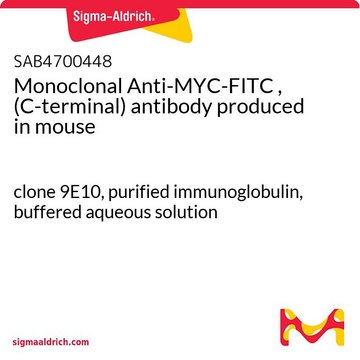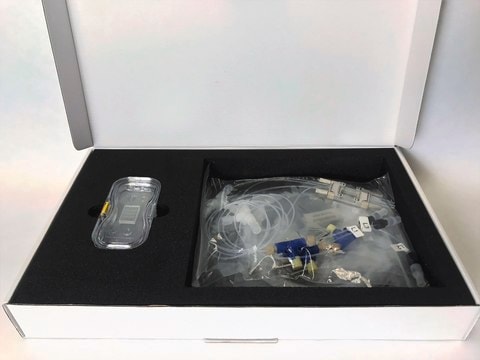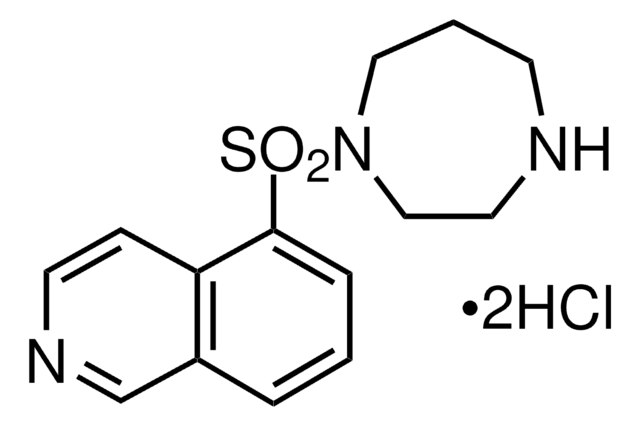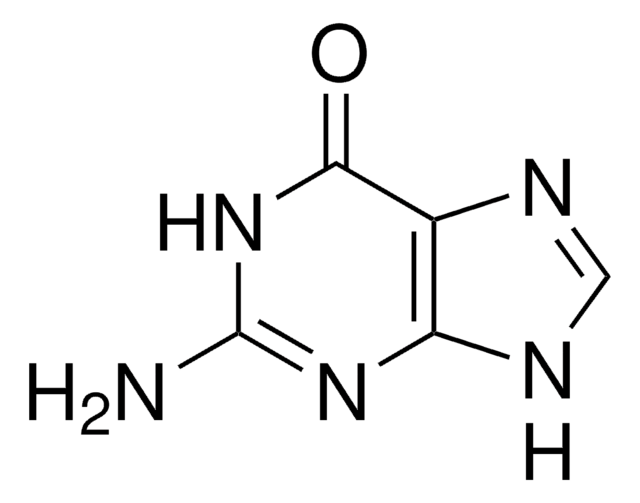B2292
O6-Benzylguanine
≥98% (TLC), solid, O⁶-alkylguanine DNA alkyltransferase inhiitor
About This Item
Recommended Products
Product Name
O6-Benzylguanine, ≥98% (TLC), solid
Quality Level
Assay
≥98% (TLC)
form
solid
solubility
methanol: 20 mg/mL
storage temp.
room temp
SMILES string
Nc1nc(OCc2ccccc2)c3nc[nH]c3n1
InChI
1S/C12H11N5O/c13-12-16-10-9(14-7-15-10)11(17-12)18-6-8-4-2-1-3-5-8/h1-5,7H,6H2,(H3,13,14,15,16,17)
InChI key
KRWMERLEINMZFT-UHFFFAOYSA-N
Gene Information
human ... MGMT(4255)
Looking for similar products? Visit Product Comparison Guide
Application
- as an inhibitor of methylguanine methyltransferase (MGMT) in glioblastoma stem cell
- as a O6-alkylguanine-alkyltransferase (AGT) enzyme inhibitor in embryonic stem cells prior to N-ethyl-N-nitrosourea(ENU) treatment
- as an inhibitor of AGT in growth inhibition assays of HL-60 human promyelocytic leukemia cells
Biochem/physiol Actions
Signal Word
Warning
Hazard Statements
Precautionary Statements
Hazard Classifications
Eye Irrit. 2 - Skin Irrit. 2 - STOT SE 3
Target Organs
Respiratory system
Storage Class Code
11 - Combustible Solids
WGK
WGK 3
Flash Point(F)
Not applicable
Flash Point(C)
Not applicable
Personal Protective Equipment
Regulatory Listings
Regulatory Listings are mainly provided for chemical products. Only limited information can be provided here for non-chemical products. No entry means none of the components are listed. It is the user’s obligation to ensure the safe and legal use of the product.
JAN Code
B2292-250MG:
B2292-BULK:
B2292-50MG:
B2292-50MG-PW:
B2292-VAR:
Choose from one of the most recent versions:
Already Own This Product?
Find documentation for the products that you have recently purchased in the Document Library.
Customers Also Viewed
Our team of scientists has experience in all areas of research including Life Science, Material Science, Chemical Synthesis, Chromatography, Analytical and many others.
Contact Technical Service


![[2-[2-(2-Methoxyethoxy)ethoxy]ethoxy]p-toluenesulfonate 90%](/deepweb/assets/sigmaaldrich/product/structures/246/083/be709a40-d1eb-4e98-9c26-c8c14e998696/640/be709a40-d1eb-4e98-9c26-c8c14e998696.png)











